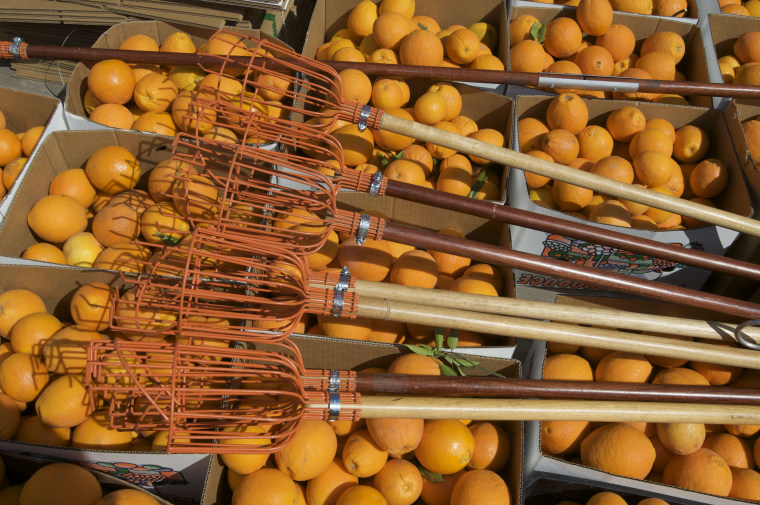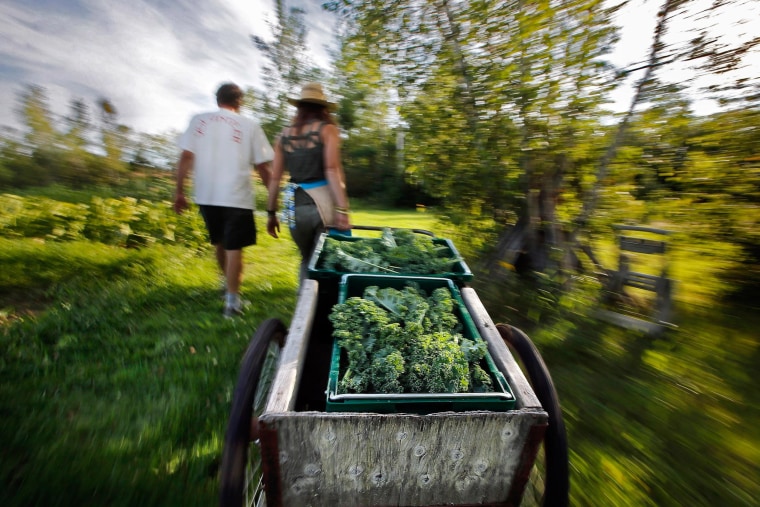Italy adopted new laws this week to cut down drastically on food waste — the second such law in Europe, joining France's. So what's the United States doing to reclaim the 30 percent of its food that's simply thrown away?
Italy's Senate overwhelmingly gave final approval Tuesday to millions of euros of tax incentives to encourage businesses, shops and restaurants to donate their unused food to charities and nonprofits.
That's a practice that historically hasn't been a part of Italian culture, which discards more than 17 percent of its food every year, according to research this year by the University of Bologna and the European Union. That's equivalent to 13 billion euros ($14.5 billion U.S.), or 1.1 percent of the country's gross domestic product.
Calling Italy's level of food waste "unacceptable," Agriculture Minister Maurizio Martina told the newspaper La Repubblica that "with this law, we get closer and closer to the objective of recovering a million tons of food and giving it to those who need it."
Compared to the United States, however, Italy is your great-grandpa Elmer, the grumpy one who grew up during the Depression and hoards ketchup and salt packets. Just in case.
Related: Eating Down the Fridge: Save Money, Eat Well
The U.S. Agriculture Department's Economic Research Service estimates that more than 30 percent of the U.S. food supply goes to waste — 133 billion pounds of it every year, equivalent to $161 billion.
The research service worked out that the discarded food is equal to 1,249 calories per day for each and every American. That's 62 percent of the recommended 2,000-calorie adult daily diet.

"In a world full of hunger, volatile food prices and social unrest, these statistics are more than just shocking," according to the North American office of the U.N. Environment Program. "They are environmentally, morally and economically outrageous."
Most of that waste is completely wholesome food that could have helped feed struggling families, the Agriculture Department says. But it also leads to more problems than just hunger.
Wasted food takes up more space in municipal landfills than any other substance, according to the Environmental Protection Agency, making landfills the country's third-largest source of methane — one of the most devastating greenhouse gases.
Several government efforts are under way, however, to get that food into bellies, where it belongs.
Related: How Silicon Valley, Flush With Free Food, Is Struggling With Waste
The Agriculture Department and the EPA, for example, set a goal last year of cutting what they called food "loss" in half by 2030. The idea is to improve product development, storage, marketing, labeling and cooking methods; connect potential food donors to food banks and pantries; and recycle food waste to feed animals.

Meanwhile, legislation in both houses of Congress targets food waste, with a special emphasis on educating consumers on what "sell by," "safe by" and "use by" labels really mean so they don't throw away perfectly good food.
Research by the Harvard Food Law and Policy Clinic found that 45 percent of all food waste happens in the home. It attributed that staggering level to consumers' confusion over the significance of date labels — which aren't based on any science and aren't regulated by the government.
The most prominent bills — the Food Recovery Act and the Food Date Labeling Act, both introduced by Rep. Chellie Pingree, D-Maine — have drawn support from both parties.
The labeling bill would establish a uniform national date labeling system to eliminate "the array of confusing labels you see in the supermarket now." The Food Recovery Act would also clarify the status of "sell-by" dates, as well as:
- Raise awareness of the impact of food waste at the household level.
- Extend and expand tax deductions for farmers, retailers and restaurants that donate food to food banks.
- Protect businesses from liability when they donate wholesome food.
- Help food banks improve their storage and distribution programs.
- Encourage schools to buy lower-price "ugly" but otherwise wholesome fruits and vegetables.
- Create an Office of Food Recovery to coordinate federal activities.
The bills have "really started a needed conversation on food waste at the congressional level," Andrew Colvin, a spokesman for Pingree, said Wednesday. "It's an issue that's starting to get some bipartisan attention."
No action was taken on the House floor on the Food Recovery Act, and the Food Date Labeling Act didn't make it out of committee before the end of the 2015-16 session. Colvin told NBC News that Pingree "definitely" plans to reintroduce it in the next Congress if she's re-elected.
Meanwhile, multiple petitions on Change.org are putting lawmakers and retailers under pressure to act.
Almost 40,000 people have signed a petition directed at House Speaker Paul Ryan, R-Wis., saying: "We are asking Congress to step up and do something simple, effective and beneficial for America, our farmers, our children and those in need."
And two others take aim at Walmart, urging it to sell "ugly" but wholesome produce.
One of them, posted by an Idaho high school student, correctly cites government statistics indicating that about two-fifths of produce never reaches the market because it doesn't look "perfect." That forces "shoppers with lower incomes [to] turn their eyes towards cheaper, highly processed foods instead," it says.
The pressure appears to be working. Walmart this year began selling "less than perfect" potatoes under the Spuglies brand, and it plans to begin selling "beautifully imperfect" Granny Smith apples in its Florida stores soon.
And later this month, the company will begin requiring all suppliers of nonperishable food under its Great Value label to standardized labels with one uniform date: "Best if used by."
"I expect the standard labels to have an even bigger impact on waste reduction, since many of our suppliers sell products under their own labels outside of Walmart," Frank Yiannas, Walmart's vice president of food safety, said in announcing the policy.
"This is significant, as the global economic impact of food wastage comes to about $750 billion each year," he said.

